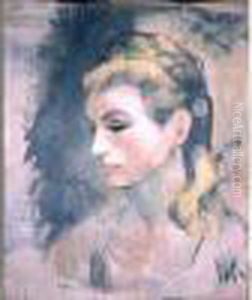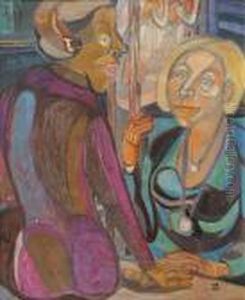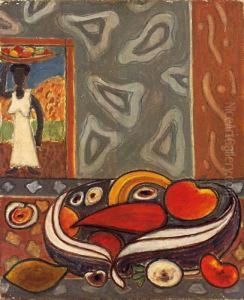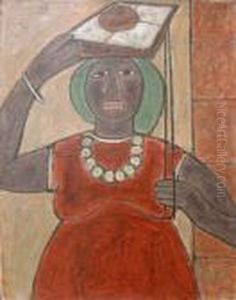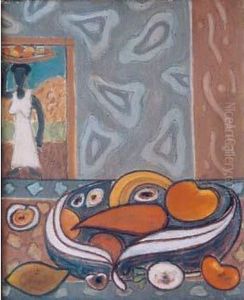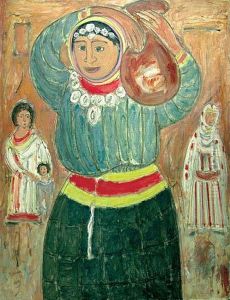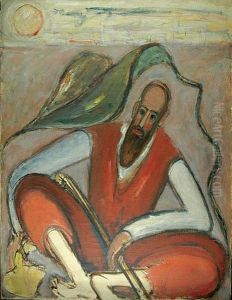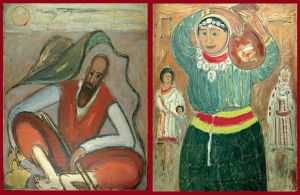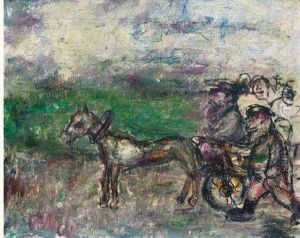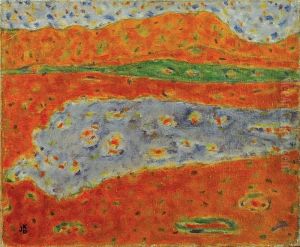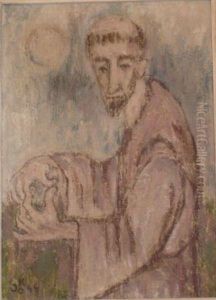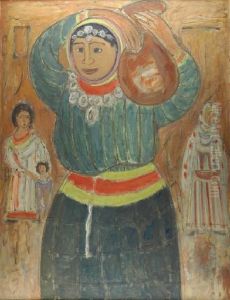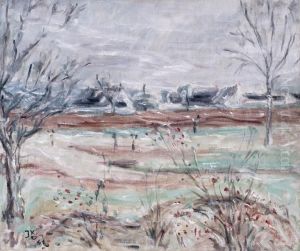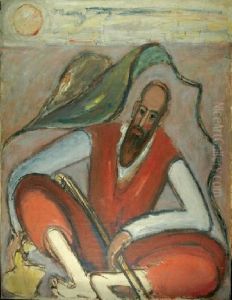Jecheskiel Dawid Kirszenbaum Paintings
Jecheskiel Dawid Kirszenbaum, also known as Yeheskel-David Kirszenbaum or just David Kirszenbaum, was a Polish-born Jewish expressionist and surrealist painter. Born on August 25, 1900, in Staszów, Poland, he was one of the notable artists of the School of Paris, which was a term used to describe the community of foreign artists living and working in the city during the first half of the 20th century.
Kirszenbaum's formative years were marked by hardship and the experience of anti-Semitism. His interest in art began early, and he sought to pursue his passion despite the challenges he faced. With the outbreak of World War I, Kirszenbaum, still a teenager, was taken to Germany for forced labor. It was during this time that he was exposed to the works of German expressionists, which would later influence his own artistic style.
After the war, Kirszenbaum returned to Poland, where he continued his education in art. In the early 1920s, he moved to Germany to study at the Bauhaus in Weimar, under the tutelage of renowned artists such as Wassily Kandinsky and Paul Klee. The Bauhaus philosophy of integrating art with everyday life had a significant impact on Kirszenbaum's approach to his work.
In 1923, Kirszenbaum moved to Paris, which was then the epicenter of the avant-garde art world. There, he became part of the vibrant artistic community, mingling with other influential artists and intellectuals. His work from this period exhibits a blend of expressionist and surrealist elements, characterized by vivid colors, fragmented forms, and a sense of dreamlike fantasy.
Kirszenbaum's career was disrupted by the advent of World War II and the Holocaust. As a Polish Jew living in France, he faced persecution by the Nazi regime. In 1940, he was interned in a labor camp but managed to escape. Tragically, most of his family perished in the Holocaust, including his wife. These events deeply affected Kirszenbaum, leaving a profound mark on his post-war artwork, which often dealt with themes of loss, memory, and Jewish identity.
After the war, Kirszenbaum struggled to rebuild his life and career. He continued to paint, creating works that reflected his personal trauma and the collective Jewish experience of suffering and resilience. His later paintings are noted for their emotional intensity and haunting imagery.
Jecheskiel Dawid Kirszenbaum passed away on May 5, 1954, in Paris. His legacy lives on through his art, which serves as a poignant reminder of the historical events that shaped the 20th century and the resilience of the human spirit in the face of adversity. Kirszenbaum's works are included in several museum collections and continue to be appreciated by art historians and collectors alike.
